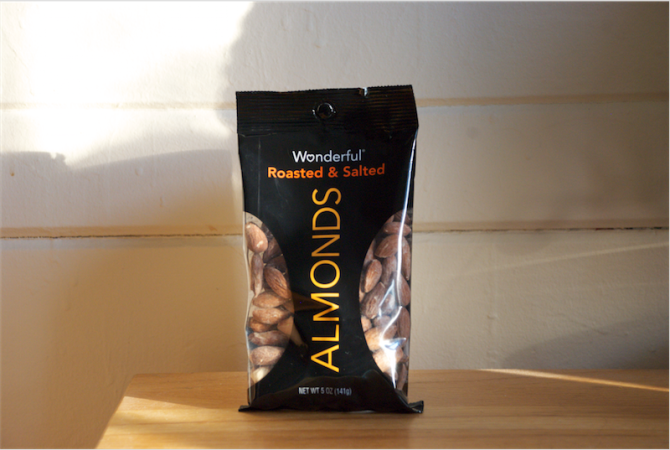For all y’all nutrition nerds out there, you’re in for a treat. A recent review published in Flavour (yes, there is a peer-reviewed scientific journal called Flavour) presents emerging evidence for the classification of fat as the sixth primary taste. Could fat join the ranks of sweet, sour, salty, bitter and umami? Science says quite possibly. Nutrition nerd or not, this research has implications for you and your health. But before we get into that, let’s get a taste (heh get it) of the nutritional building blocks behind the study.
The Background
Just so we’re all on the same page—what is a primary taste? Well, just like primary colors mix to yield a range of other colors, primary tastes combine to form more sophisticated tastes. Red + blue = purple. Sweet + sour = sweet & sour. (I didn’t say it was creative.) Easy enough. A more interesting question, though, is why the sense of taste exists in the first place. Classified by the Flavour researchers as a “nutrient-toxin detection system”, taste is thought to be the tongue’s way of telling the brain whether we should swallow or reject food.
Sweet? Contains carbs—safe to swallow. Umami? Contains protein—safe to swallow. Salty? Contains minerals—safe to swallow. Sour? Contains excessive acid—proceed with caution. Bitter? Contains potential poisons—reject. So…where does fat come in?

Photo courtesy of reddit.com
The Evidence
In order to attain taste-hood, fat must pass five scientific criteria:
1. It has its own distinct class of affective stimuli.
In other words, there’s gotta be something in fat to signal “fat is here” to our tastebuds. For umami, that “something” comes in the form of glutamate and other amino acids. Studies suggest that the free fatty acids from the breakdown of fatty foods serve this purpose for fat. Distinct affective stimuli—check.
2. There are specific receptors for the stimuli and mechanisms to translate the signals.
Once the fatty acids are detected, the chemical signal needs to be translated into an electrical signal. German molecular genetics researchers have identified G protein-coupled receptors (GCPRs) as part of this process. It is proposed that the fatty acid transporter CD36 works together with GCPRs to detect fatty acids. Delayed rectifying potassium (DRK) channels are also part of the transduction pathway of many taste stimuli. But, if you’re like me and biology isn’t your first language, think: detection and translation of stimuli—check.
3. The electrical signal reaches the taste-processing parts of the brain.
Prior research has laid out a potential pathway: fatty acids trigger receptor/channel —> neuron membrane gets depolarized —> noradrenaline and serotonin are secreted —> brain gets told that “fat is here”. Admittedly, more research is needed in the specifics of fat taste neurotransmission (Ph.D in nutrition, anyone?), but for our purposes: neurotransmission—check.
4. Fat perception is independent of those of other tastes.
This one is tricky. There isn’t really a signature perception of fat like the sweetness of fructose or saltiness of table salt. Turns out there’s actually a sensory concentration continuum for the perception of taste, a spectrum that gives way to very nuanced ground. At low concentrations, fat can be detected, but the concentration is too low for it to be recognized, or considered as taste. The existence of a recognizable taste quality associated with fat is still being debated. Is the detection threshold enough to establish fat’s perceptual independence? Stay tuned.
5. Downstream physiological effects.
Multiple studies support the theory that fatty acids eventually generate signals to prepare the body for fat digestion and absorption. Physiological effects—check.

Photo courtesy of giphy.com
The “So What?”
Ah, yes. So why does all this talk of affective stimuli and CD36 and GCPRs matter? According to numerous rodent and human studies, there is a relationship between fat sensitivity and fat consumption. Rats that are less sensitive to the fat (as indicated by deficiencies in specific GCPRs and under-expression of CD36) are less able to regulate food intake. Furthermore, people who are more sensitive to oleic acid (a fatty acid that occurs naturally in many animal/vegetable fats and oils) consume less fat and fewer calories. A lack of sensibility to fat may lead to overconsumption of fatty foods, which has been linked with obesity and various other health complications. In a nutshell, the more fat one tastes, the less fat one eats.
Luckily, none of this is set in stone. Less sensitivity to fat does not mean dietary doom. In fact, fat sensitivity can be modulated by diet. Reducing your fat consumption, particularly when it comes to heart-unfriendly saturated fat, can increase your sensitivity to fat and moderate your overall food intake. Of course, this doesn’t mean you should slash all fats from your diet.
Mono- and poly-unsaturated fats contain many health benefits, so nuts, legumes and seeds deserve to stay.

Photo by Kristina Kim
Pizza, ice cream and custard? Now that’s a different question…

Photo by Sarah Strong


